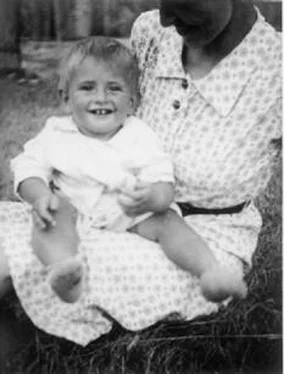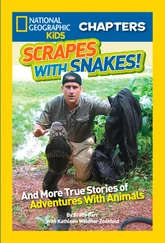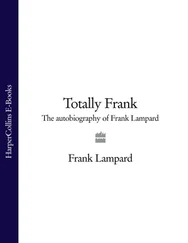Bobby initially agreed to cooperate, but with the explicit caveat that the film was to be a dissertation on the evils of the United States, not about his personal life or about chess. As Bobby envisioned it, it would be mainly about his “kidnapping” (as he referred to his arrest and detention) and escape.
Filming began the moment Bobby touched down in Copenhagen, with a camera in the sports vehicle that drove him, Miyoko, and Saemi to Sweden, en route to Iceland. Shot using various cinema verité techniques, with low production values, the film was poorly edited and thematically scattered. It was produced for 30 million kronur (about $500,000 dollars). The initial footage was intriguing, however, since it provided the first real glimpse of Bobby since his match with Spassky in 1992. Bobby was clear-eyed and focused as he forcefully held forth: “I hate America: it’s an illegitimate state. It was robbed from the Native Americans and built by black African slaves. It has no right to exist.” As he delivered his poison against the Jews, the Japanese government, and the United States, he was oddly frisky, as if he’d just become aware that he was free. He and Saemi began to sing “That’s Amore” and other familiar old songs, almost as if they were long-lost friends—as they were at that time—taking a ride in the country and singing to pass the time. There was even laughter on occasion. Miyoko sat quietly, her Mona Lisa smile emerging as she looked with reverence at Bobby.
Continuing to shoot the film in Reykjavik over the next months, Gudmundsson kept trying to pin down Bobby for further interviews and increase his involvement in the project. “What’s the title of the film going to be?” Bobby asked. When he was told it was My Friend Bobby (it was eventually changed to Me and Bobby Fischer) , he immediately began to question the whole endeavor. “This is a film that is supposed to be about my kidnapping, not about Saemi,” he complained. Then money became an obstacle. Bobby was angry that he was not being given any “up front” money. Gudmundsson offered Bobby 15 percent of the profits, with Saemi, the producer Steinthor Birgisson, and Gudmundsson also getting 15 percent each, the remaining 40 percent to be paid to the coproduction partners. Fischer was furious. Why was Saemi being paid anything? And since the film was about Bobby, why shouldn’t he receive more money than the others? “I should be paid at least 30 percent,” he argued vehemently, “more than anyone else because I am Bobby Fischer.” He repeated this refrain over and over again: “ I am Bobby Fischer! I am Bobby Fischer! I am Bobby Fischer!”
Gudmundsson tried to explain what he was doing. He told Bobby that the film had the potential to become a masterpiece: “This will be a postmodernist documentary with feature elements.”
“Never mind about that,” Bobby shouted. “Tell me what the film is going to be about. ”
Gudmundsson mapped it out in writing in an all-inclusive public relations proposal:
This film is about the atom bomb.
This film is about a retired policeman.
This film is about unconditional love.
This film is about a world champion of chess.
This film is about unconditional hate.
This film is about an icon.
This film is about victory.
This film is about the war on terror.
This film is about an international fugitive.
This film is about insanity.
This film is about rockdancing.
The more of the description Bobby read, the more disgusted he became with the film, with Gudmundsson, and with Saemi. Bobby appealed to the members of the RJF Committee to see if they could help stop the film or get an injunction issued before it was completed. Sympathetic to Bobby’s plight, the committee circulated to its members a letter of protest that was ultimately sent to Icelandic Television, other media, and to the financial backers and distributors of the film. Bobby changed some of the wording of the protest before it was mailed, making it much stronger and less diplomatic. It read, in part:
Mr. Fischer wishes the group to draw attention to the fact the manuscript and structure of the aforementioned “documentary,” of which he is the main subject, are grossly inconsistent with further discussions and that the material was obtained by fraud.
The primary theme of the film now, which working title is “My Friend Bobby,” is in his opinion, quite contrary to the ideas that were proposed in the year 2005 concerning a possible news program for Icelandic television of the U.S. organized kidnapping and imprisonment of Mr. Fischer in Japan, his being granted Icelandic citizenship and release from prison.
For this reason, it is absolutely against his wishes that parties in Iceland and elsewhere should provide financial subsidy for the production of this film or should show it once completed.
Bobby had already stopped talking to Saemi and taking calls from Gudmundsson, and he began referring to his ex-bodyguard as a “Judas” for trying to make a film that was more about Saemi than about Bobby’s travails. Bobby wanted the film to be a polemic, not a biography—and he certainly didn’t want it to be about his bodyguard. Almost to a man, members of the RJF Committee broke off any further contact with Saemi Palsson. As it turned out, the film was a box office dud, bringing in only $40,000; it did make additional revenue from DVD sales and television licensing.
Then Bobby’s royal displeasure was directed at another Icelander, Gudmundur Thorarinsson. “I never received the full amount from the gate receipts from 1972,” Bobby suddenly accused Thorarinsson at a party at his house. “I want to see the books. Where are the books?” Bobby demanded. Thorarinsson gasped quietly and explained that Bobby had received his full share of the gate receipts in 1972, that he didn’t have the account books at home, but that he’d look for them at the offices of the Icelandic Chess Federation, where he’d been president in 1972 and had been instrumental in initiating the World Championship match. After more than thirty years there was little hope that the records still existed. Bobby was unsatisfied with the answer. The books were never found and Bobby never talked to Thorarinsson again.
Bobby had been using different forms of fallacious logic to accuse and attack whole classes of people, such as the Jews. Now he used his spurious logic against benevolent Icelanders. His illogical syllogism went something like this:
Saemi cheated and betrayed me.
Saemi is an Icelander.
Therefore all Icelanders are cheaters and betrayers.
A litany of attacks, suspicions, and far-fetched offenses began erupting in the RJFers’ direction after the Saemi incident, and few from the group escaped Bobby’s wrath. Even key stalwarts felt his sting: Helgi Olaffson for not tolerating Bobby’s anti-Semitic enmity, and for asking too many questions about the “old chess” (“He must be writing a book”); David Oddsson for reasons unknown, even to Oddsson himself; and, surprisingly, Gardar Sverrisson, his closest friend, spokesman, and neighbor, because Gardar didn’t inform him about a silly and harmless photograph of Bobby’s shoes that appeared in Morgunbladid . Gardar got off relatively unscathed—Bobby’s snit against him lasted only twenty-four hours. The rest of the group became persona non grata.
By the fall of 2007, Bobby’s disillusionment with Iceland was fixed. He called it a “God-forsaken country” and referred to Icelanders as “special but only in the negative sense.” If his Icelandic benefactors knew of his expressions of ingratitude (“I don’t owe these [people] anything!” he spitefully proclaimed), they didn’t discuss them publicly, a characteristic of many Scandinavians. Those who directly experienced his thanklessness were saddened but stoic. “Well, that’s Bobby,” one Icelander observed. “We have to take him as he is.” It was as if he were a changeling, a troubled child not so secretly adopted by the Icelanders, but with love and without foreboding.
Читать дальше


![Антон Текшин - EndGame [СИ]](/books/394477/anton-tekshin-endgame-si-thumb.webp)









